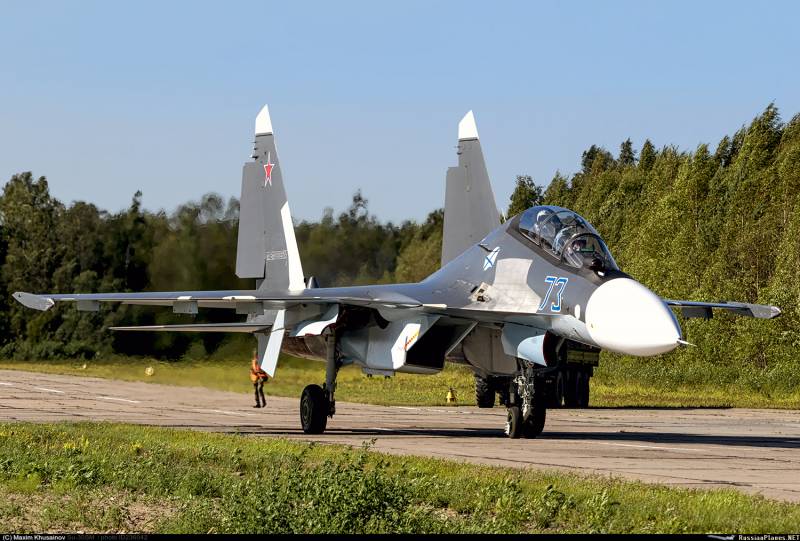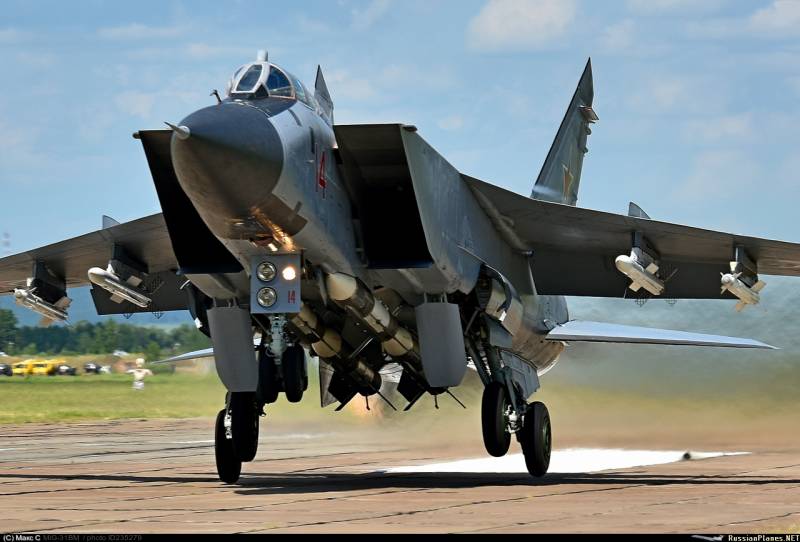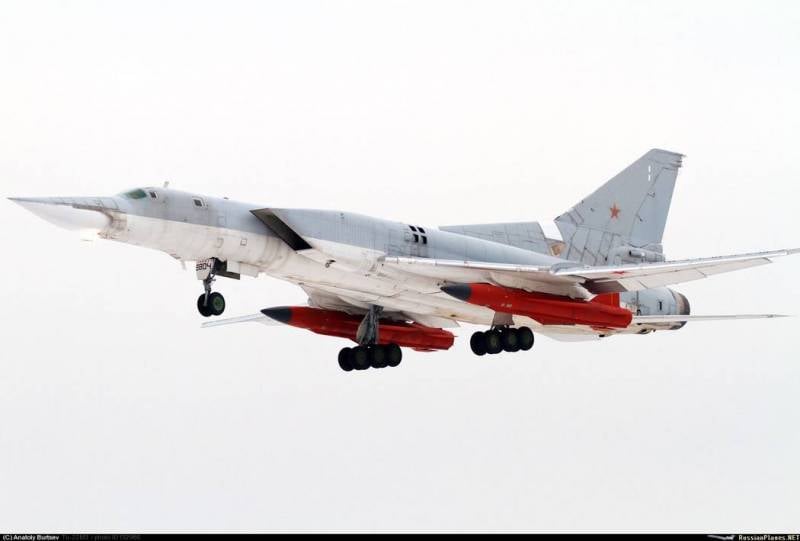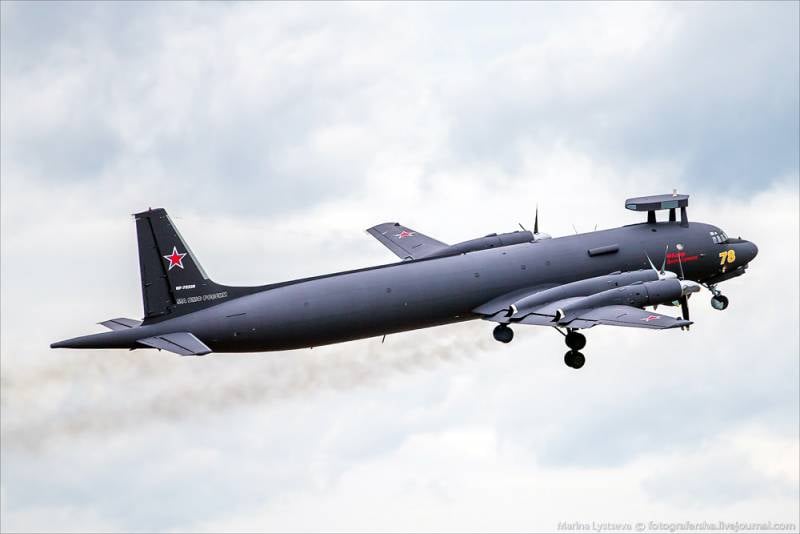Naval Aviation of the Russian Navy. Current status and prospects. H. 3
So, two squadrons of the MiG-31, which are part of the naval aviation of the Ministry of Finance of the Russian Federation, as it can be understood, will be updated to the MiG-31BM, but no further transfer of aircraft of this type to the naval aviation is planned. That, in general, is absolutely correct, since the place for these aircraft is still in the air defense aviation.
Available Su-33s are likely to serve another 10-15 years, gradually leaving for a well-deserved rest. Obviously, they will not order new deck MiG-29KR / KUBR, especially since in the coming years 17 Su-33 and 22 MiG-29KR / KUBR, even taking into account current repairs, etc., will always be able to provide 100% loading of the TAVKR "Admiral fleet Soviet Union Kuznetsov. "
Until recently, the air force of the Baltic Fleet consisted of the Su-24M squadron and the Su-27 squadron (probably modernized) —that was all that remained of the 4-th separate Guards Marine Assault Aviation Regiment and the 689-th Guards Fighter Aviation Regiment. However, then the situation turned for the better. The Baltic Fleet received several Su-30SM multi-role fighters, all of which entered the 72-th aviation base of the Baltic Fleet's aviation base at the Chernyakhovsk airfield, where the Su-24M squadron was based. And in 2017 g, it was again transformed into an air regiment having a mixed composition of two squadrons, one of which was Su-30CM (the exact number transferred to the BF, unfortunately, is unknown to the author).
But the Omshap 4 doesn’t seem to be limited to the revival: according to statements made by the responsible persons made by 2018 in January, it is “an opinion” to reanimate the famous 689 th gap, equipping it with Su-27CM and СM3, and then, in perspective, transfer him to one squadron of Su-35.
The Black Sea Assault Aviation Regiment, obviously, will gradually replace the Su-24M available in its armament and will fully switch to the Su-30CM. In addition, there is information that, on the basis of the Su-30CM, transferred today to the Northern Fleet in the 279-th service, a separate air regiment will be deployed, equipped with aircraft of this type.
Thus, we see a clearly traceable desire of the Russian Navy leadership to provide the Northern and Black Sea fleets with one regiment of multifunctional fighters each (and the Baltic Fleet even two!), Not counting deck aircraft and MiG-31BM. But what about the Pacific Fleet? Having at his disposal a single squadron of MiG-31BM, he obviously needs to replenish the air force: it is impossible to imagine that the leadership of the Russian Navy does not understand this. Therefore, and taking into account the fact that Su-30CM is declared as the backbone of Russian naval aviation, the deployment of the Su-30CM regiment to the Pacific Fleet is most likely.
If these plans come true, then each of our four fleets will receive one regiment of land-based Su-30CM multi-role fighters, not counting carrier-based aviation and two MiG-31BM squadrons, and for BF another Su-27M or M3 will follow, replenishment Su-35. Assuming the average number of air regiments at the level of 30 units, we will need for this 18 Su-27CM / CM3, a dozen Su-35 (in perspective) and at least 120 Su-30CM. But is it real for us today?
Well, as of last year, Su-27CM / СМ3 was only about fifty years old, and whether it is possible to select 18 machines for the Baltic Fleet from this number ... somehow doubtful. Therefore, it is most likely that this will be the case - a regiment consisting of two squadrons (24 machines) will be revived, and sometime later, in the bright future, they will add another dozen Su-35 to them. And no matter how it turned out, one squadron will fly on Su-27, the second - on, say, Su-27СМ3, and then be removed from Su-27, replacing them with Su-35. Well, all right, these are just guesses, akin to fantasy on the coffee grounds. But is it really possible for naval aviation of the Russian Navy to get into its membership 120 Su-30CM for the formation of the Baltic, Black Sea, Northern and Pacific regiments?
Recall that the supply of Su-30CM to our armed forces was counted in March of 2012 g, when the first contract for 30 of this type of aircraft was made for the Air Force and the Russian Navy. Then there were others, and today the total number of contracted vehicles is 116 units, of which more than a hundred have already entered the VC and Navy, and by the end of 2018 there will be all 116. At the same time, 88 machines will serve in the VKS, and in the naval aviation of the Navy - 28 aircraft of this type. As you can see, after more than six years since the start of deliveries, and despite the fact that the share of “marine” Su-30CM in the total volume of their production is quite noticeable 24%, we still haven’t scraped the cars into one 30 -aircraft regiment. What will be next?
According to the article by A. Nikolsky (“Vedomosti”), which is referenced by the bmpd blog, the Russian Defense Ministry plans to conclude a contract for the purchase of another 2018 Su-36CM in the HVAC and Navy of the Russian Federation by the end of the 30 blog. Delivery will be carried out within three years (production of 12-14 machines per year is expected) and will be completed at 2021. All would be fine, but in August 2017 of Kommersant announced that production of Su-30СМ to 2022 g would be almost completed , and the plant is reoriented to the production of pans ... I beg your pardon, MS-21 passenger airliners. In total, in the worst case, we can expect the delivery of another 36 Su-30CM, which will still have to be somehow divided between the VKS and the Navy and ... everything. Focusing on the existing proportion of the distribution between these branches of the armed forces, it turns out that naval aviation of the Russian Navy will receive 9 machines. Of course, the share of Su-30CM due to naval aviation can be increased, but even the transfer of 20 machines from the planned NNFX RF Navy will allow to increase the number of Su-36CMs in naval aviation only to 30 machines, that is, to two regiments of two squadrons each . And this is unrestrained optimism.
Is it possible to increase the production of Su-30CM over the aforementioned 36 machines? No doubt, because for the normal functioning of production facilities and preparation of production for conversion (oh, how difficult it was to print this word!) Irkutsk Aviation Plant (IAP) requires an order for 100 machines (including export), which they have not yet gained. Thus, nothing prevents the IAZ from ordering another dozen or so Su-30CM. But will it be done, and, if so, how many cars will naval aviation get?
Of course, the Kommersant’s statement about the cessation of production of the Su-30CM may turn out to be erroneous, and airplanes of this type will also be produced after 2021. But in what quantity? Until the end of this year, we will have 28 Su-30CM in naval aviation, for example, IAP will produce 12-14 aircraft per year, of which 4-5 (33-35%!) Will be transferred to the Russian Navy. But for the acquisition of 4-x regiments for 30 machines, we will need another 92 aircraft, that is, at such a rate, the program of retrofitting naval aviation will be delayed by 18-23 of the year ...
The situation is somewhat simplified if we form regiments in the composition of two squadrons, that is, on an 24 aircraft. Then we will need 96 aircraft for this, 28 is already there, 68 is left. However, as we can see, even this value is hardly lift for us - in order to ensure such flow even for the next 10 years, we need to transfer the RF Navy via 6-7 Su-30CM annually, but until today the pace was much more modest - 4-5 machines. Of course, sometimes miracles happen, but to rely solely on them would be wrong. Perhaps the following will turn out - the Baltic Fleet and the Northern Fleet will receive a squadron instead of the promised aviation regiment: that is, after the Su-24M is decommissioned, the Baltic 4 will be again lost its status, and in the north, the 279-th mission will have one full squadron and a little bit of Su-33 and the second squadron of Su-30CM, and the Black Sea and Pacific fleets will still receive an 24-aircraft composition for the regiment. Total will be needed for the existing 28 aircraft "just something" 44 machines, and this is somehow more similar to the opportunities we have - transferring the fleet on 5-6 aircraft per year, for years 8-9 look and manage.
True, by the end of these 9 years, that is, by 2028 g, all Su-24Ms will leave the system, MiG-31BM will serve the latest terms, and Su-27СМ and Su-33 will finally become obsolete both morally and physically. Although the latter will deal a little better than the first, as the Su-33 is still newer. In total, it can be assumed that with some acceleration of the existing rates by the end of the twenties, naval aviation of the Russian Navy will have at its disposal:
The Baltic Fleet is a regiment comprising a squadron of Su-35 and a squadron of Su-27М3, as well as a separate squadron of Su-30СМ. Total - 36 aircraft;
Northern Fleet - two shelves, including: 279-th okiap with squadron Su-30SM and squadron Su-33 and 100-th regiment with 22 MIG-29KR / Kubr) and, in addition, a separate squadron Mig-31 . Total -58 machines.
Black Sea Fleet - 43-i Omshap on Su-30СМ (24 machines);
The Pacific Fleet is a regiment of Su-30CMs and a separate squadron of MiG-31BMs (36 machines).
In total, 154 multifunctional fighters, of which 24 are already physically and / or morally outdated (12 Su-33, 12 Su-27СМ3), and the most modern Su-30СМ and MiG-29КР are still allowed and improved, but only fourth generation fighter. This is still better than we expect to see at the end of 2018 g (125 machines). But how much is this enough for the fleets to solve their tasks?
The American supercarrier has 48 multifunctional fighters as part of the wing, but at any time can increase their number to 60 - in this case, one such ship will outnumber any domestic fleet, including the Northern and Pacific, in terms of the number of tactical aircraft. Nevertheless, given the presence of a “strategic reserve” in the form of a full-blooded regiment, the upgraded Tu-22М3М and the Northern and Pacific Fleets are able to carry out an operation to destroy a single enemy AUG. By swiftly redeploying this regiment to a threatening direction, having provided and supplemented its strike with naval aviation forces, we, theoretically, get good chances to crush a single AUG as part of a supercarrier and escort ships.
The Tu-22М3М, with the newest X-32, is significantly superior in its capabilities to the Soviet regiments, armed even with the newest Tu-22М3 with the X-22 anti-ship missiles.
The main drawback of the Soviet missile-carriers then was the frankly weak missile seeker, which actually required the crew of the aircraft carrying the aircraft to approach the target at a distance from which the missile on the suspension, that is, before the launch, was able to capture the target. As a result, the rocket carriers were forced to enter the AUG air defense zone, breaking through fighter patrols, and even volleys of naval air defense missiles. Of course, the Tu-22М3 could go on the attack at supersonic speeds, minimizing the time spent in the danger zone, but still, the losses were assumed to be very high - up to 80% of attacking aircraft.
With the advent of X-32, the situation has changed significantly. The range of the rocket is indicated at the level of 800-1000 km, while the RCC is equipped with a radically improved GPS that, according to the creators, is capable of operating in a difficult jamming environment. Probably, in a real combat situation, the planes will not use them from the maximum range, but even if they do, the Tu-22М3М will not have to climb deep into the AUG air defense system, respectively, their fighter-cover missions are greatly simplified, and the losses are reduced. However, all of the above does not make the destruction of an enemy ship detachment (especially AUG) easy. Tu-22М3М must be deployed to the airfields from which the attack will be made. X-32, with all its merits, is liquid fuel, which means that it, like X-22, should be refilled before the attack, that is, it must be delivered to the airfield to Tu-22М3М, to refuel, hang it to the planes, dreary and long and during this time it is necessary, of course, to protect the airfield from the effects of the enemy. The attack itself is highly desirable to conduct from two different directions, the enemy can push the ship of the radar patrol forward, and its presence should be taken into account and destruction provided, etc.
In general, such an operation is extremely difficult and for its successful completion is extremely important reconnaissance, the establishment of the exact location of enemy ships. And with this, our naval aviation is not that a problem, but one continuous, large, such a black hole.
The fact is that the maritime reconnaissance and target designation system (SMRTS) or, if you will, EGSONPO (unified state system for lighting surface and underwater conditions) will be truly effective only when it includes all the necessary components, such as: satellite grouping, over-the-horizon radar, stations and airplanes (and, possibly, UAVs) of radio-technical reconnaissance and long-range radar detection, hydroacoustic stations, both stationary and mobile (that is, reconnaissance ships with GUS on board), etc. But today, our satellite constellation is frankly small and cannot guarantee the submission of timely data on enemy ships. ZGRLS are good, but the data they provide require additional exploration, and both of them are generally vulnerable to the enemy’s influence at the initial stage of the conflict. The deployment of hydroacoustic systems is in its infancy, and there is simply no specialized RTR and DRLO aircraft as part of naval aviation. As a matter of fact, apart from a pair of DRLO Ka-31 helicopters and, possibly, several surviving Su-24 reconnaissance aircraft, our fleets do not have specialized reconnaissance aircraft at all.
Of course, there is something in the VKS - according to unverified data, today we have 4 upgraded A-50 and 7 A-50 on the wing (another nine such aircraft are stored). As for the RTR and EW airplanes, we have no more than 20 of these (perhaps no more than 15), if we consider IL-22 of all relevant modifications and IL-214Р. In general, the VKS themselves will not be enough, and rely on the fact that they will share with the fleet ... it is possible, but this is not guaranteed. And, as we have already said, it is unlikely that the crews of the VKS will have the specific skills required by sea pilots.
Thus, the problem is not even a small number of multi-purpose fighters per fleet, but the fact that naval aviation is not able to provide the necessary information space for their successful application. American supercarriers are primarily dangerous by the balance of their air groups - they include DRLO and EW airplanes, which are also capable of conducting electronic reconnaissance. We, in order to provide at least something, will be forced to use either anti-submarine Il-38H, which, after modernization, have a certain intelligence potential, or all the same Su-30CM with the Khibiny, using them as reconnaissance aircraft.
However, such use of multifunctional fighters will distract part of the aircraft, and therefore reduce the already small number of them that a separate fleet will be able to allocate for solving air defense tasks and, if necessary, shock. And what about silt ...
IL-38H, is a deep modernization of the IL-38 with the installation on it of the modern complex "Novel P-38». As a result, the aircraft received unique characteristics of its kind - it is able to conduct radar, thermal imaging, radio hydroacoustic, magnetometric and radio electronic reconnaissance simultaneously, while all these stations are linked into a single complex, which in real time analyzes and summarizes all the information obtained by all the above methods . In general, it is an excellent patrol aircraft and a very formidable enemy for submarines, which is also capable of detecting enemy surface ships, aircraft and ensuring the issuance of the control center for them. But it is extremely doubtful that, on the basis of the anti-submarine aircraft and at the same time preserving and expanding its anti-submarine functions, it was possible to place the RTR and the DRLO, which are suitable for specialized aircraft. As a matter of fact, the majority of sources, noting the presence of a radar system on the IL-38H, provide fairly moderate characteristics of its capabilities — detection of surface targets up to 320 km (that is, not up to a radio horizon even for large targets) and airborne - only 90 km (and according to some information, it is a question of targets with EPR in 3 sq. m.), which, of course, is much inferior to the capabilities of not only A-50U, but also the American deck E-2D “Edwanst Hockey”. There is practically no data on the capabilities of PTR, but it is likely that it also loses to the equipment installed on specialized aircraft.
However, at least in terms of radio intelligence, the Il-38H would be an extremely useful machine if it were not for one “but”. The fact is that it is planned to equip the "Novella P-38" a total of 28 aircraft, and, apparently, this is all IL-38, capable of flying, which we have. In addition, approximately two squadrons (17 aircraft) of Tu-142, which are supposed to be upgraded to the level of Tu-142М3М, will remain in naval aviation (it is unclear how deep this modernization will be and how the capabilities of the upgraded Tu-142М3М will correlate with the IL-XNNXX to be related to the IL-38M to the modernization of the modernized Tu-4М4М. and with the tasks of finding and destroying an 45-generation submarine). Thus, on the XNUMX fleet we have only XNUMX anti-submarine aircraft, which, of course, is absolutely, absolutely not enough. In the event of a large-scale non-nuclear conflict with NATO, we will need all of them to ensure the security of the SSBN, by detecting and destroying enemy atomicines in the areas of deployment of our submarine rocket carriers, and will divert such aircraft to perform other tasks (even as important as the destruction of AUG) perhaps that a crime.
Of course, besides anti-submarine aircraft, the naval aviation has anti-submarine helicopters, but, again, there are few of them - 83 machines. Given that a pair of helicopters at a distance of 200 km from their home base and two combat missions per day per vehicle is required to provide round-the-clock duty, X-NUMX Ka-17 helicopters will be required (the time of combat duty at the specified distance is only 27 hours) The specified number will not be able to provide round-the-clock duty of maximum 1,4 pairs. And not for each of the four fleets, but for all the 5 fleets, which is generally speaking very, very little.
But the most unpleasant thing is not even the fact that today the naval aviation of the Russian Navy does not have specialized RTR and DRLO aircraft, but that such reinforcement is not even supposed. At the same time, the author of this article could not find information that would allow us to hope for an increase in our anti-submarine aviation, which would free up some IL-38Н (although they are not quite suitable for this) to perform reconnaissance and target designation tasks. So far, everything is limited to upgrading the IL-38 to IL-38Н and Ka-27 to Ka-27М, which does not allow us to expect an increase in the fleet of anti-submarine aircraft and helicopters, but almost guarantees its reduction. As it seems, part of the helicopters that are currently combat-ready are too old for it to make sense to invest in their modernization.
And besides ... considering the opposition of enemy AUG, we acted in many ways schematically, analyzing not a real combat situation, but rather some theoretical action. Well, practically ... Suppose in 2028 we were on the threshold of a large-scale conflict with NATO. The American AUS (i.e., 2 AUG) is packed with airplanes (in this case, it’s quite possible to stuff an 90 machine into an aircraft carrier, not counting EW, DRLO and helicopters) and approaches the coast of Norway (a member of NATO). There part of the aircraft flies to the Norwegian airfield network to operate from there. So, the United States has 180 multifunctional fighter jets "Super Hornet" and "Lightning", whose combat radius allows them to operate practically throughout the entire Barents Sea. The Northern Fleet is able, as we have said, to oppose this well if 58 machines, including 12 Su-33 (by that time there will hardly be more on the wing), just as many MiG-31BMs (despite the upgrades air superiority). At the same time, in the interests of American squadrons, X-NUMX-8 DRLO “Advanst Hokai” airplanes and not less (but rather more) “Groolers” will operate, while we will be able to tear off only Il-10Н.
So who will be the hunter in such conditions? Will our anti-submarine aviation be able to operate in the conditions of enemy air domination? It is sad to admit it, but most likely it will be the other way around. And to the enemy "Virginia", aiming our SSBNs, will add a NATO patrol aircraft, scouring in search of our submarine component of nuclear forces and the few covering its multi-purpose submarines.
- Andrei from Chelyabinsk
- Naval Aviation of the Russian Navy: Current State and Prospects
Naval Aviation of the Russian Navy. Current status and prospects. H. 2




Information